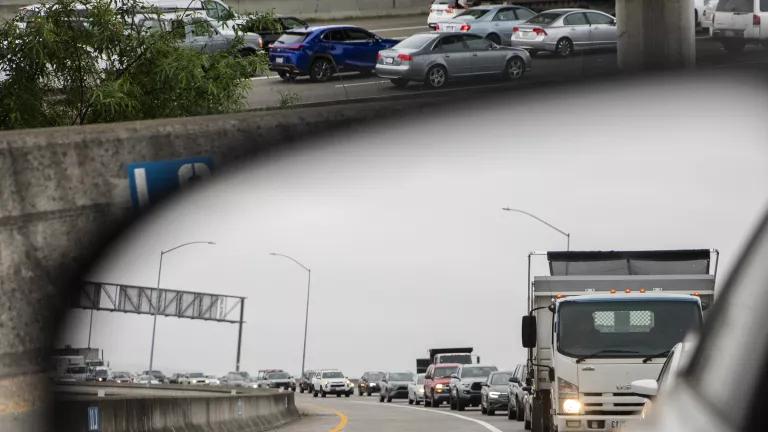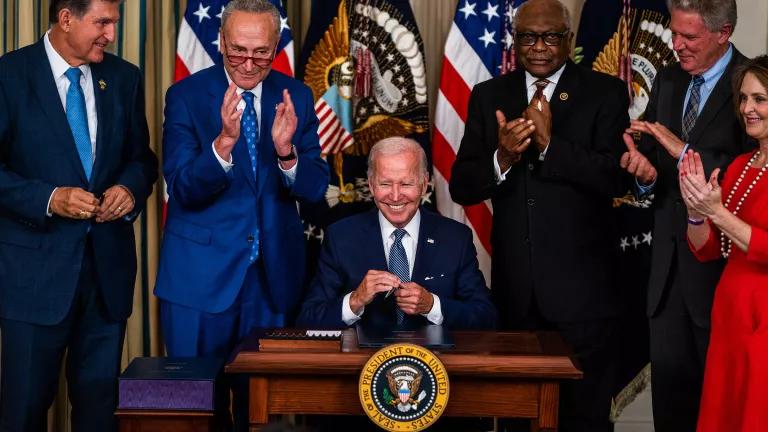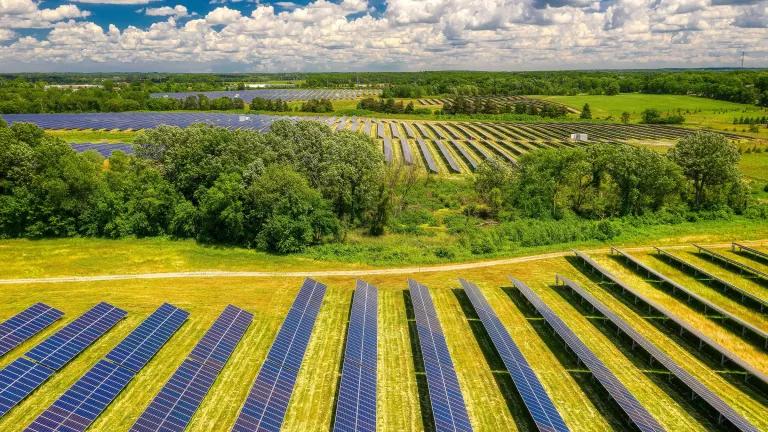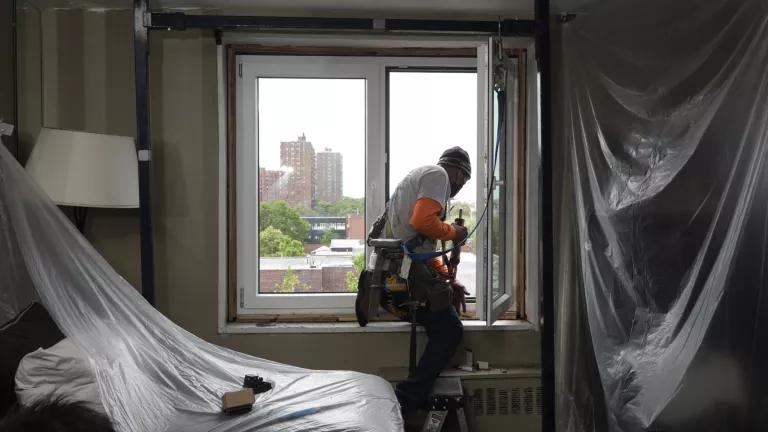EPA’s Clean Cars Plan Can Deliver Health and Climate Gains
Fossil fuel pollution from cars and trucks harms public health and contributes to the climate crisis. EPA’s plan to tighten pollution standards will benefit all Americans—if it chooses an aggressive path.

Traffic backs up along I-80 as morning commuters make their way into San Francisco.
Fossil fuel pollution from cars and trucks harms public health and contributes to the climate crisis. EPA’s plan to tighten pollution standards will benefit all Americans—if it chooses an aggressive path.
Starting today, we will speak at a two-day public hearing to urge EPA to follow through on its plan to issue strong standards for light-duty vehicles—plans that protect our climate and health.
Earlier this month, the U.S. Environmental Protection Agency (EPA) announced a proposal to tighten carbon pollution requirements for passenger cars (including SUVs, minivans, and light pickup trucks) navigating America’s roads, starting in 2023. It will call for substantial cuts in climate pollution while also delivering near-term health benefits and cost savings for people across the country.
The latest report from the Intergovernmental Panel on Climate Change released earlier this month makes it clear—once again—that now is the time to act boldly to address the worsening climate crisis. People in America and around the globe are experiencing the negative impacts of climate change today, and those costly hazards are growing in severity. Dangerous heat waves, wildfires, and flooding are becoming more frequent and intense as the planet warms. Strong, immediate action to cut carbon pollution is needed now to minimize these costly impacts in the future and deliver cleaner air across the country.
As NRDC Clean Vehicles and Fuels Group Director Luke Tonachel will point out in his testimony at the public hearing, the previous plan that EPA finalized in 2012 during the Obama administration was justified and provided much-needed reductions in carbon pollution. Despite the dramatic weakening of standards under former president Trump, EPA should be working to at least restore the carbon reductions laid out under the 2012 rule for model years 2021 through 2025. EPA can do this by finalizing the stronger set of standards that was also detailed in the 2012 plan, under “Alternative 2” standards.
According to EPA’s own analysis, the stronger alternative to EPA’s proposal would get the United States closer to recapturing the much-needed emissions reductions that had been expected under the original plan nearly a decade ago. Specifically, a stronger plan would deliver between $8 billion and $16 billion more net benefits than the proposal over the lifetimes of model-year 2023–26 vehicles. With this bolder action, the United States would achieve more emissions reductions and consumers would save more money at the pump than the current proposal.
The stronger standards would also help set up the nation for widespread adoption of zero-emission electric vehicles.
President Biden recently set a goal of 50 percent electric vehicle (EV) sales by 2030. To reach that target, EV sales need to be at least 12 percent in 2026, based on a recent analysis of standard technology diffusion curves in leading European EV markets. However, EPA’s proposal aims for 8 percent in 2026. If the EPA instead adopts the stronger alternative and tightens the stringency of car standards for 2026, automakers would receive an appropriate signal to continue their EV investments and sales on the path to meeting President Biden’s 2030 goal.
In addition to helping to protect our climate, the benefits of a stronger clean cars plan would both save drivers money at the fuel pump and help protect our health. Dr. Vijay Limaye, a former EPA air pollution scientist, will discuss the significant public health and climate benefits of a strong clean cars plan at the public hearing. These benefits are substantial, according to EPA’s analysis of Alternative 2:
- $16 billion of the total benefits through 2050 are attributable to reduced tailpipe emissions of air pollutants, including those that form microscopic particulate matter (PM 2.5), a deadly class of tiny soot particles that are emitted from burning gasoline and other fossil fuels. This type of air pollution is especially dangerous because it can penetrate deep into our lungs and enter the bloodstream. PM 2.5 exposure causes serious health effects, such as hospital admissions due to respiratory and cardiovascular illnesses, nonfatal heart attacks, aggravated asthma, and decreased lung function. Exposure can also have deadly effects because breathing in PM 2.5 pollution can trigger fatal heart and lung diseases.
- Although not quantified in EPA’s initial analysis, cleaner air achieved through new requirements could help to address long-standing environmental and health disparities because communities of color and low-income communities suffer disproportionately from air pollution generated from car-clogged highways and diesel-polluting truck traffic.
- The stronger alternative proposal would result in more than 2 billion tons of avoided carbon dioxide pollution through 2050. According to EPA’s analysis, the cumulative emissions avoided through 2050 are roughly equal to the greenhouse gas emissions from all petroleum combustion in the United States in the year 2019.
- Beyond achieving direct cuts in soot air pollution (by reducing emissions of other climate pollution from cars and trucks), the stronger plan, over the longer term, will also help to make a needed dent in the growing health and financial costs of the multiple downstream health hazards posed by the climate crisis—including more severe wildfires, coastal storms, and heatwaves.
- Under the stronger plan, American drivers would save between $150 billion and $290 billion in fuel costs through 2050.
Overall, the benefits of the stronger version of the clean cars plan would far exceed the total costs. The strong alternative is expected to deliver about $180 billion in net benefits through 2050. These huge financial savings are the result of improved public health and reduced health-care spending, fuel savings captured at the pump, and anticipated reduced impacts from climate change, such as property damage due to increased flooding and growing risks to agriculture.
With climate hazards accelerating and converging across the country both during this summer and in recent years, and with our country’s already serious air pollution problem getting worse, not better, now is the time for EPA to step up and establish ambitious emission controls that will cut dangerous levels of pollution and help to slow climate change. NRDC urges EPA to finalize a stronger clean cars rule to maximize near-term carbon pollution reductions and set the United States on the best path for even stronger future standards that meet the moment on climate.




